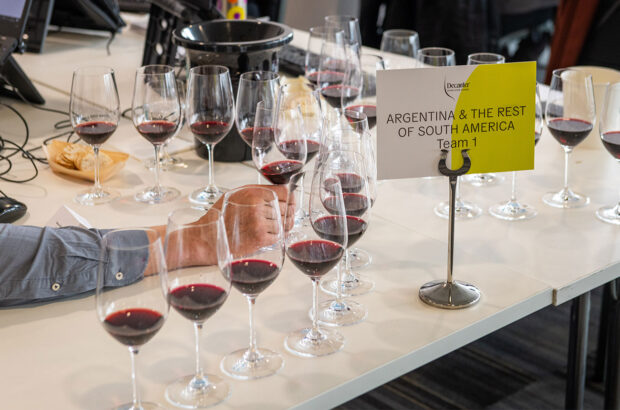Proposed mass deportation of undocumented immigrants could have a major impact on vineyards in particular, where vineyard owners, especially on the US West Coast, rely heavily on undocumented farm labour for their harvests.
Tariffs could also raise prices on foreign wines, theoretically making US-made wines more competitive domestically.
Uncertainty abounds, but many American wineries and growers are preparing for major federal shifts in domestic and international policy.
The looming impact of Trump’s immigration policies
California, home to 81% of all US wine production, stands to be the most impacted by any potential labour law and deportation policy changes. Blanca Wright, a member of California’s Farm Labor Contractor Association (CFLCA), says of the proposed reduction in available farm workers: ‘For growers, these policies could potentially impact their ability to secure skilled labour, which increases production costs and can delay harvests.’
Washington State grower Dick Boushey stated similar concerns for his operation, ‘100% of my crew are Hispanic people, mostly from Mexico, others from El Salvador, Guatemala and recently Peru. Many of my long-term workers are getting older, and we don’t see a lot of replacements except for new immigrants.’

Vineyard workers in Santa Barbara County. Credit: George Rose / Getty Images
One potential solution for the vineyard labour shortage could be increased use of H-2A visas. These visas allow foreign workers meeting specific requirements to work in the US for a short period of time. However, the programme is restrictive compared to more traditional work visas, with specific requirements to show the business has made every effort to hire domestic workers.
Boushey expressed some optimism that the programme could help the potential farm labour shortage. ‘Many growers are turning to the H2-A programme, which brings in as many as 30,000 agricultural workers into our area throughout the growing season. Without this programme, it would be a battle to get workers, and if there are positive changes to the current H2A programme, that would benefit everyone involved.’
Uncertainties remain over how the H2-A programme would work for the wine industry en masse. The main issue is that smaller producers usually cannot provide housing and transportation to workers as required by the visa.
However, it may be a permanent solution for larger operations, with many vineyard management companies in California already picking up H2-A eligible workers directly at the Mexican border.
Potential labour shortages
Farm Labor Contractors (FLCs), are the main delivery system for H2-A workers in the American agriculture industry. They are especially important for medium and small growers, accounting for 44% of all certified H2-A jobs in 2022, up from 13% in 2007. FLCs provide workers to vineyards and wineries without the logistical issues of being a direct part of the H2-A visa program.
This number is set to increase easily with the proposed labour changes. FLCs manage logistical issues with the visa programme, providing transportation and housing for workers and lending them to various agricultural businesses.
Other solutions to help resolve any economic changes looming for the American wine industry are possible. On the labour side, automation is the main route being taken to offset any loss of labour force. Mechanical grape harvesters have been around for decades, with mixed reviews from premium producers on end grape quality and clear benefits for the cost of harvest.
Fully automated vine pruning machines are a newer option but are prohibitively expensive and lend themselves more to high-yielding vineyard operations. However, such machines may not be optional if there are not enough workers to hand pick and prune.

A mechanical harvester of grapes in the vineyard. Credit: Eloi Omella / E+ via Getty Images
The terror of tariffs
Also, regarding the American wine industry, there are proposed tariffs. President-elect Trump has promised a 20% tariff on all incoming goods to the US. This could directly impact the American wine industry’s cost of supplies, including imported glass and barrels.
Imported Chinese wine bottles stand to be the most affected, with the incoming administration promising a whopping 60% tariff on Chinese goods. Some large wine conglomerates, like Gallo, are more protected from tariffs by producing glass internally and being more vertically integrated, an unavailable luxury for independent producers.
New tariffs on imported wine also occurred during the previous Trump administration. During a trade dispute in 2020, a 25% tariff was temporarily imposed on imported French wines.
Importer and owner of Oregon’s Ovum Wines, John House, states of the previous tariffs, ‘American wineries didn’t benefit from the hundreds of millions generated from wine tariffs… prices just went up, that was the result.’
The general manager of Three Sticks Wines in California’s Sonoma Valley, Prema Kerollis, expressed concern at the impact of a potential trade dispute on exports. ‘If tariffs are applied to wines of any sort, we believe we would see our international business more or less evaporate.’
Tariffs generally result in reactionary tariffs by the opposing country, and a trade war during the previous Trump administration resulted in tariffs on American goods from the EU and China.
Some are raising the alarm; Oregon Pinot producer Nicolas-Jay co-founder Jay Boberg stated of current lobbying for the industry, ‘I do not think our lobbying will make a huge impact, but I know that efforts to send out the siren to elected officials are in process.’ Groups like the US Wine Trade Alliance (USWTA) actively engage with US Congress members and incoming Trump officials to avoid future wine tariffs.
The next few years will prove pivotal to the American wine industry, and it is still unclear which Trump campaign proposals will be fully implemented. The industry is already stressed, with grape prices crashing across many wine regions during the 2024 harvest. Due to low demand, California is reducing its planted vineyard land by 20,000ha (50,000 acres).
American wine producers crave stability, and currently, it’s what they lack.







